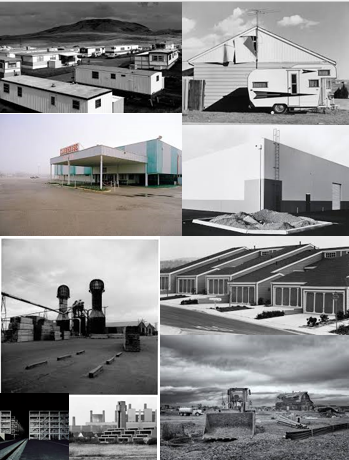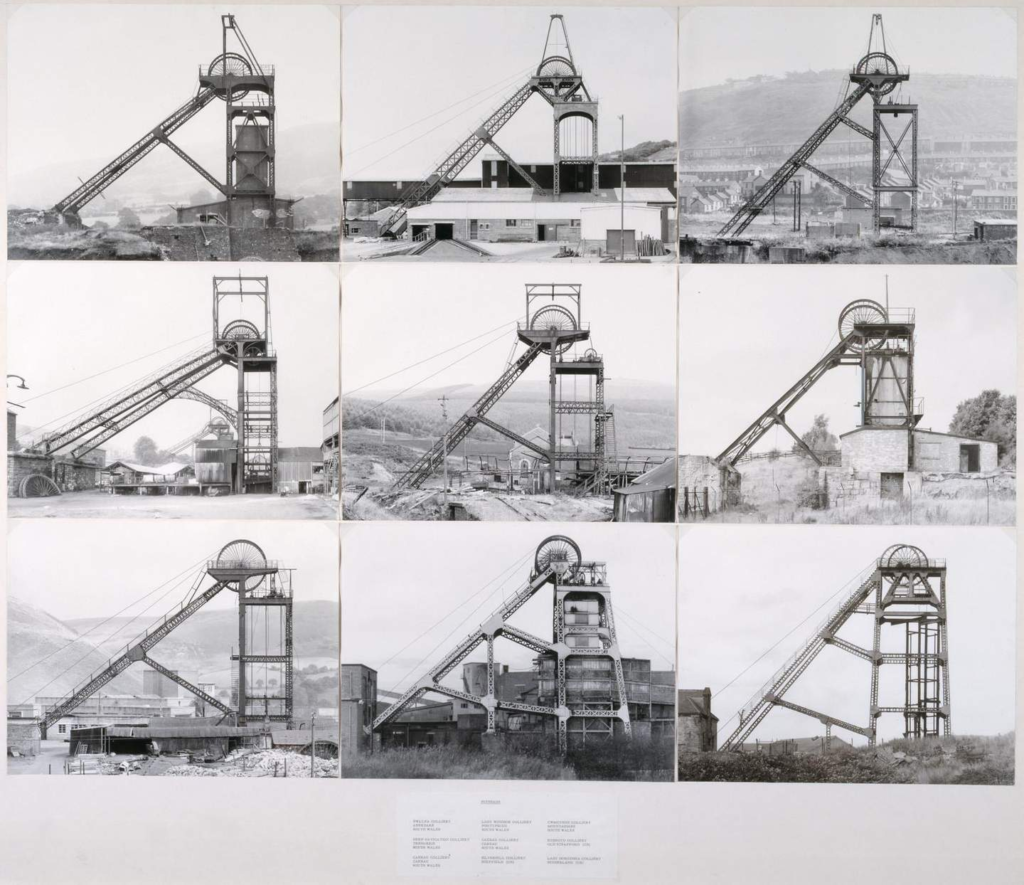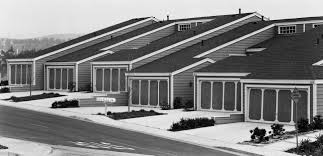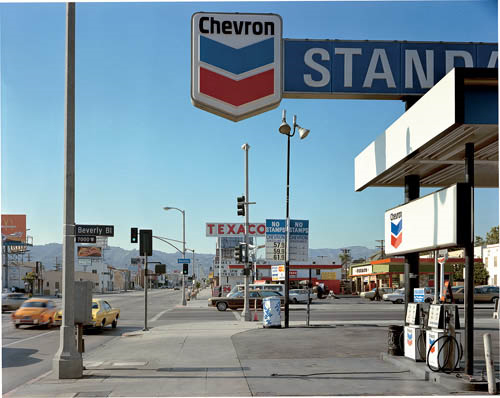Definition
“New Topographic: Photographs of a Man-Altered Landscape” was a ground-breaking exhibition of contemporary photography landscape held at the George Eastman House’s International Museum of Photography from October 1975 to February 1976. topographic is the physical feature of the area.
Term from William Jenkins
New topographic was a term called by William Jenkins in 1975 to describe a group of American photographers (such as Robert Adams and Lewis Baltz) whose pictures had a similar aesthetic, in that they were formal, which are mostly black and white prints of the urban landscape.
Their photographs were taken in a built-up environment, suburban sprawl, industrial structures, and the mundane aspects of daily life.


Pitheads (1974)
Tate
© Estate of Bernd Becher & Hilla Becher
The New Topographies photographers, which include Robert Adams, Lewis Baltz, Bernd and Hilla Becher, Frank Gohlke, Nicholas Nixon, and Stephen Shore, documented built and natural landscapes in America, often capturing the tension between natural scenery and the man made structures of post-war America: car parks , suburban homes, crumbling coal mines. These photographs, stark and documentary, are often a lack of human presence.
Jenkins described the images as “neutral” in style, “reduced to an essentially topographic state, which conveys the substantial amounts of visual information but was very serious in the aspects of beauty, emotion, and opinion.
Features
Jenkins described the images as “neutral” in style, “reduced to an essentially topographic state, which conveys the substantial amounts of visual information but entirely the aspects of beauty, emotion, and opinion”.
What Was The New Topographic A Reaction To?
They were reacted by the tyranny of an idealised landscape photography that elevated the natural and the elemental.

Image Analysis-Stephen Shore

Technical
In this image there is a slow shutter speed due to the cars in the distance being blurred. The light is a natural light because it was taken near lots of petrol stations. This is a very strong but cold light. The light was projecting towards the signs which will create hard edge shadows that will project onto the pavement below.
Visual
There is hard edge square pavement, signs and the horizon line , which creates harsh, clear lines . The rule of thirds are present because this image can be split into a grid, into threes. There is lots of repetition with the signs due to ,most of the lines being squared shaped.
Contextual
By using the red, white and blue colour theme it represents the American flag, which conveys national pride of the nation. By having lots of petrol stations it implies that this era focuses on the oil industry and the nature in the background represents the environment. With these two together, it shows a connection between the oil industry and the nature of the American dream in the the 1970s. By being in a town it conveys isolation due to being far away from a city and it also implies a sense of community because everyone will know everyone that lives in this small town.
Conceptual
This image connects nature and the oil industry. It also looks like the angle of the mountain is pointing to the petrol stations.
